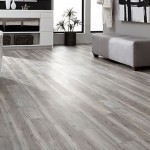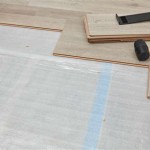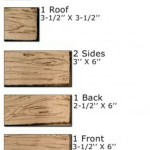Bat Flooring Rubber: A Comprehensive Guide
Bat flooring rubber, specialized rubber flooring designed for environments where bats are housed or studied, presents a unique set of challenges and requirements. Unlike typical flooring materials used in residential or commercial construction, bat flooring must prioritize safety, hygiene, durability, and the specific needs of the bat species inhabiting the space. This article will delve into the crucial aspects of bat flooring rubber, including its properties, installation considerations, maintenance protocols, and the overall importance of selecting the right material for optimal bat welfare and facility management.
Understanding the Unique Demands of Bat Habitats
Bat habitats, whether natural caves or artificial enclosures in research facilities, zoos, or conservation centers, present a challenging environment for flooring. The consistently high humidity, the presence of guano (bat droppings), and the potential for physical abrasion necessitate a flooring material that can withstand these harsh conditions. Standard flooring options like concrete or wood often prove inadequate due to their susceptibility to moisture damage, difficulty in cleaning, and potential for harboring bacteria and fungi. Bats, being sensitive creatures, are also susceptible to irritants and potential toxins that could be released from unsuitable flooring materials. Therefore, the selection of appropriate flooring is paramount to ensuring a healthy and safe environment for these animals.
Furthermore, the specific behaviors of different bat species should be considered. Some species prefer to crawl on the floor, while others primarily roost on walls or ceilings. Regardless, the flooring must provide adequate grip to prevent accidental slips and falls, and it should be non-abrasive to protect their delicate wing membranes. The floor also plays a role in maintaining proper temperature and humidity levels within the enclosure, contributing to the overall well-being of the bat colony.
Finally, from a human perspective, the flooring must be easy to clean and disinfect to maintain hygienic conditions and prevent the spread of diseases. The accumulation of guano can create unsanitary conditions and pose a health risk to both bats and the staff working in the facility. Choosing a flooring material that simplifies cleaning processes is crucial for effective facility management.
Key Properties of Ideal Bat Flooring Rubber
The ideal bat flooring rubber possesses a range of specific properties designed to address the challenges outlined above. These properties are crucial for ensuring the safety, health, and well-being of the bats, as well as the efficient operation and maintenance of the facility.
Durability and Resistance: Bat flooring rubber must be highly durable and resistant to the abrasive effects of guano and the constant wear and tear of daily use. It should be able to withstand heavy cleaning and disinfection without degrading or losing its integrity. Resistance to chemicals found in cleaning agents is also essential. A high-quality rubber compound resists cracking, chipping, and peeling, ensuring a long lifespan and minimizing the need for frequent replacements.
Non-Porous and Waterproof: Impermeability is a fundamental requirement. A non-porous surface prevents the absorption of liquids, including guano and cleaning solutions, thereby inhibiting the growth of bacteria, fungi, and other microorganisms. This also makes the flooring much easier to clean and disinfect, contributing to a healthier environment. Waterproofing prevents moisture from seeping into the subfloor, which can lead to structural damage and the growth of mold.
Slip Resistance: Bats, especially when landing or maneuvering within their enclosure, need a surface that provides adequate grip. A textured surface on the rubber flooring is crucial to prevent accidental slips and falls, minimizing the risk of injuries. The texture should be designed to provide sufficient traction without being abrasive to their delicate wing membranes.
Chemical Inertness and Non-Toxicity: The flooring material must be chemically inert, meaning it does not react with guano or cleaning agents to release harmful chemicals. It also needs to be non-toxic, ensuring that it does not pose a health risk to the bats if they come into direct contact with it. The chosen rubber compound should be tested and certified to meet strict safety standards.
Ease of Cleaning and Disinfection: Efficient cleaning and disinfection are essential for maintaining a hygienic environment. The flooring should be easy to clean with commonly available cleaning agents and disinfectants. A smooth, non-porous surface simplifies the cleaning process and prevents the accumulation of dirt and debris. Resistance to staining is also a desirable feature.
Flexibility and Comfort: While durability is paramount, the flooring should also offer a degree of flexibility to provide a comfortable surface for the bats. This can help reduce fatigue and stress, particularly for species that spend a significant amount of time on the floor. A slightly cushioned surface can also help absorb impact and reduce the risk of injuries.
Installation and Maintenance Considerations for Bat Flooring Rubber
Proper installation and regular maintenance are critical for maximizing the lifespan and effectiveness of bat flooring rubber. Inadequate installation can lead to premature wear and tear, while neglecting maintenance can compromise hygiene and create an unhealthy environment for the bats.
Surface Preparation: Prior to installation, the subfloor must be properly prepared. This typically involves cleaning the surface to remove any dirt, debris, or existing coatings. The subfloor should also be level and free from cracks or imperfections that could compromise the integrity of the flooring. In some cases, a self-leveling compound may be necessary to create a smooth and even surface.
Adhesive Selection: Choosing the right adhesive is crucial for ensuring a secure and long-lasting bond between the rubber flooring and the subfloor. The adhesive should be compatible with both the rubber material and the subfloor, and it should be resistant to moisture and chemicals. It is important to follow the manufacturer's instructions carefully when applying the adhesive.
Installation Technique: The rubber flooring should be installed according to the manufacturer's recommendations. This typically involves cutting the material to the appropriate size and shape, applying the adhesive evenly, and carefully placing the flooring onto the subfloor. It is important to ensure that there are no gaps or air pockets between the flooring and the subfloor. The seams between adjacent pieces of flooring should be properly sealed to prevent the ingress of moisture and contaminants.
Seam Welding (Optional): For added protection against moisture penetration and bacterial growth, seam welding can be used to create a continuous, seamless surface. This involves using a specialized heat gun to melt the edges of the flooring together, creating a strong and waterproof bond. Seam welding is particularly beneficial in areas with high humidity or where frequent cleaning and disinfection are required.
Regular Cleaning: Routine cleaning is essential for maintaining a hygienic environment and preventing the accumulation of guano. The flooring should be cleaned regularly with a mild detergent and water. Harsh chemicals should be avoided, as they can damage the rubber material and potentially harm the bats. A pressure washer can be used for more thorough cleaning, but care should be taken to avoid damaging the flooring.
Disinfection: Periodic disinfection is necessary to kill bacteria, fungi, and other microorganisms. The choice of disinfectant should be carefully considered to ensure that it is effective against the target organisms and safe for the bats. It is important to follow the manufacturer's instructions carefully when using disinfectants, and to ensure that the flooring is thoroughly rinsed after disinfection.
Inspection and Repair: The flooring should be regularly inspected for signs of damage, such as cracks, tears, or peeling. Any damage should be repaired promptly to prevent further deterioration and to maintain the integrity of the flooring. Minor repairs can often be made with patching compounds or sealants.
Guano Management: Effective guano management is crucial for maintaining a clean and healthy environment. This may involve the use of specialized guano removal systems or regular manual cleaning. The frequency of guano removal will depend on the size of the bat colony and the design of the enclosure.
In summary, selecting, installing, and maintaining bat flooring rubber requires a comprehensive understanding of the specific needs of bats and the environmental challenges of their habitats. By prioritizing durability, hygiene, and safety, facilities can create optimal environments for these fascinating creatures.

Rubber Tiles Gym Sports Flooring Badminton Court Manufacturers In

Bat Pattern Carpet Machine Washable Anti Fouling Slip Temu

Super Roll Rubber Flooring Rolls Sports Pyt

What Is The Best Flooring For A Dugout And Are Your Options

8 Mm Blue Fleck Roll Rubber Flooring

Black Rubber Flooring Rolls Rollout On Deck Sports

8mm Strong Rubber Rolls Designer Series Rolled Matting Home Gym Basement Design Flooring

Gym Rubber Roll Flooring At Rs 400 Sq Ft Wooden In Mumbai Id 2853252532291

Black Recycled Rubber Gym Flooring Tiles 1 M X 20 Mm

Rubber Gym Tile 15mm Mats Flooring Commercial Tiles Mani Sports
Related Posts








